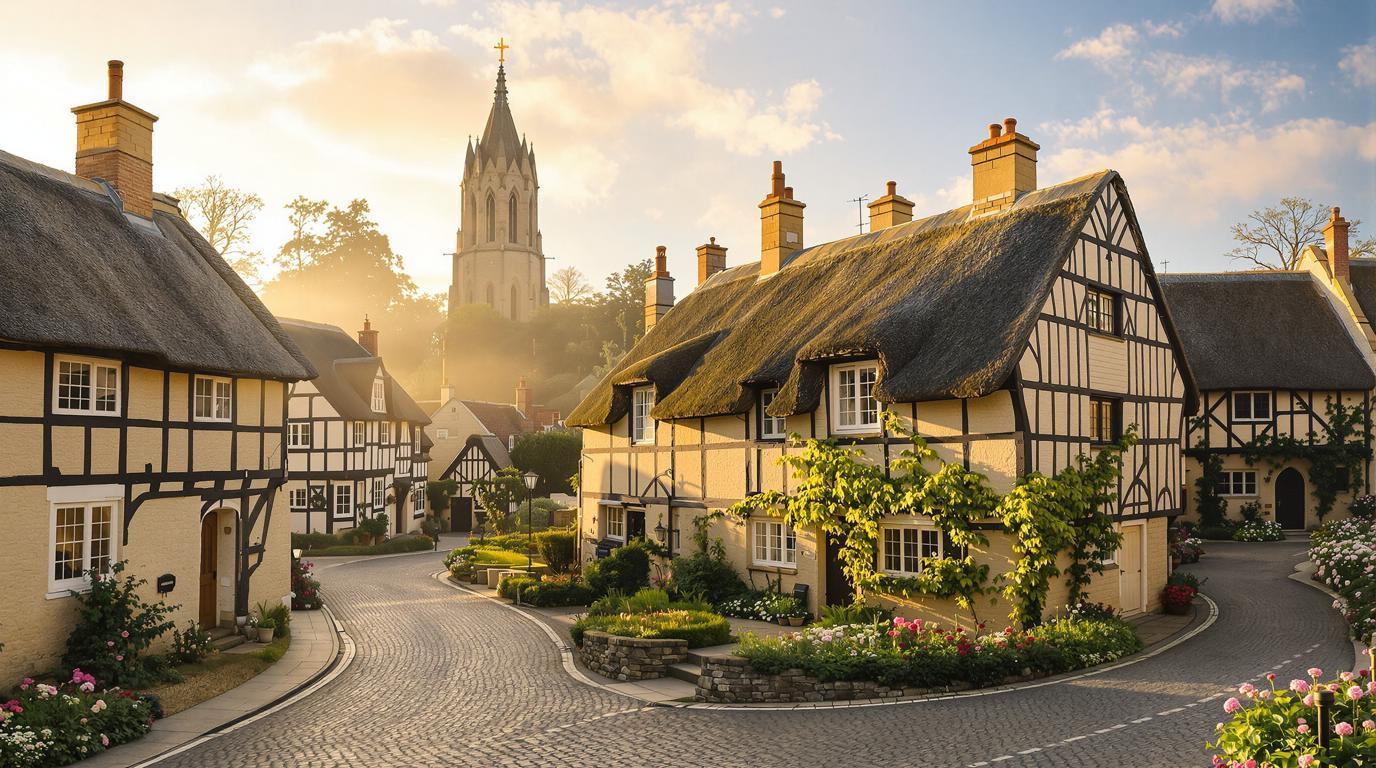The National Trust owns 98% of Lacock village in Wiltshire, and locals have spent decades carefully managing what they call their “living time capsule.” With only 1,100 residents spread across medieval streets that haven’t changed since the 1400s, this isn’t just preservation – it’s protection.
Village council meetings reveal genuine concern about tour bus invasions that could destroy the authentic atmosphere locals have guarded for generations. The scarecrow festival committee actually voted to limit advertising after 2019’s unexpectedly large crowds.
What locals understand is that Lacock’s magic lies in its unchanged daily rhythms, where residents still collect milk from the village shop and gather at St. Cyriac’s Church for centuries-old traditions that mass tourism would inevitably disrupt.
The medieval preservation locals actively protect
National Trust stewardship beyond typical ownership
Unlike other heritage sites, Lacock’s National Trust management operates through resident partnerships rather than external control. Local families still live in 15th-century cottages, maintaining authentic village life while the Trust handles structural preservation and visitor management.
Authentic daily life that tour groups would destroy
Morning routines include residents walking cobblestone streets to collect fresh bread from the bakery, children playing in medieval courtyards, and evening gatherings at The George Inn – a 14th-century pub where locals discuss village affairs over traditional ales.
Why Castle Combe crowds chose the wrong Cotswolds village
Overcrowded alternative missing Lacock’s authentic character
Castle Combe receives 400,000 annual visitors who photograph the same postcard view, while Lacock’s 50,000 guests experience genuine village life. The difference: Castle Combe became a tourist attraction, while Lacock remained a living community.
Measurable advantages that preserve cultural authenticity
Lacock’s Fox Talbot Museum celebrates photography’s birthplace with intimate exhibitions impossible in crowded destinations. Village walking tours include just 12 people maximum, ensuring personal connections with local guides who share family stories spanning centuries.
The film location secret that changes everything
Harry Potter connections locals carefully manage
Lacock Abbey’s Hogwarts filming locations attract devoted fans, but locals established strict protocols limiting film crews to protect village character. The Trust coordinates shoots during off-peak seasons, ensuring residents maintain normal routines.
Historical significance beyond Hollywood glamour
The abbey’s 800-year history includes Ela of Salisbury’s founding story, medieval manuscripts, and architectural innovations that shaped English monastery design. This depth transcends any single film production.
Respectful visit timing that locals appreciate
Seasonal preferences protecting village rhythms
October through March offers the most authentic experience, when locals reclaim their streets and traditional events like wassailing ceremonies occur without tourist interference. Spring brings controlled visitor numbers that support local businesses without overwhelming daily life.
Cultural guidelines that preserve community trust
Parking restrictions limit day-trippers to the designated National Trust car park, while village streets remain accessible to residents. Photography policies protect private homes, ensuring locals’ privacy while allowing respectful documentation of public spaces.
Essential planning for cultural preservation
What should visitors expect during different seasons?
Summer months (June-August) bring the highest visitor numbers, with abbey rooms open until 15:45 and grounds accessible until 17:00. Autumn offers the most authentic experience with fewer crowds and traditional harvest celebrations.
How does the National Trust manage overtourism concerns?
Timed entry tickets limit abbey visitors to manageable groups, while village areas remain naturally regulated by limited parking and narrow medieval streets that discourage large tour buses from attempting access.
What makes Lacock different from other Cotswolds destinations?
Unlike commercialized villages, Lacock maintains working community life with residents who’ve lived here for generations, creating authentic cultural exchanges rather than performative tourism experiences.
When do locals prefer visitors to experience their village?
Early morning visits (before 10:00) and late afternoon hours (after 16:00) allow natural interaction with residents during their daily routines, while midday periods see managed tourist flows through abbey grounds.
How can visitors support local preservation efforts?
Shopping at the village store, dining at local pubs, and purchasing National Trust memberships directly fund conservation work while supporting the community economy that keeps Lacock authentically inhabited.
The residents of Lacock have created something remarkable – a living medieval village where authentic community life continues alongside respectful heritage preservation. Their protective approach ensures future generations can experience genuine English village culture rather than a commercialized tourist attraction.
Visit during quieter seasons, respect local guidelines, and understand that you’re entering a carefully preserved community where every cobblestone has been protected by people who call this extraordinary place home.
